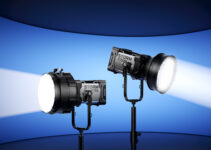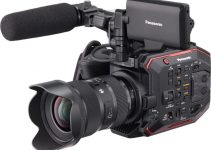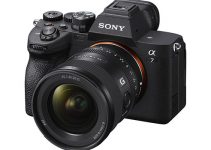Yeap, you’ve read that right and yes, I’m aware of the fact that it’s 2017 already. But surprisingly enough, the point that Simon Cade of DSLRGuide is trying to make in one of his recent videos has made me think for a while as it probably did with more than 230,000 other people thus far.
So, how an obsolete camera comparison between an outdated piece of technology like the Canon T3i and a high-end cinema digital camera like the ARRI ALEXA Mini could gain so much traction and spur such vigorous debates online nowadays? Well, I’m sure that each and every one of you has a few guesses and certainly can express a strong personal opinion on the topic, but if you’re interested in the notion that Simon is trying to convey here, take a few minutes to watch the piece below.
In terms of technical specs and real-life performance of both cameras, this comparison test showcases the quite apparent differences that most of us are already well aware of and expect to see. The lack of sharpness and detail in the T3i’s footage in addition to the limited dynamic range, poor codec, low resolution, blown highlights, nasty digital noise, aliasing and moire artifacts are evident and the list goes on. The particular shot that made me ponder on the subject, however, was the one below.
I’m pretty sure that most of you would agree with Simon that regardless of how expensive is the camera you’re using, if you can’t light your scenes properly, or even worse, if the overall acting and narrative of your production suck, chances are you won’t be able to get to the tipping point of your professional filmmaking career anytime soon.
Now, forget about the obsolescent Canon DSLRs and imagine what you can achieve these days with a device that has the features and capabilities of cameras like the Panasonic GH5, Sony A7S II or any other contemporary professional camcorder, as long as you’re experienced and talented enough as a filmmaker and have an inspiring story to tell.
And, no I’m not fooled by thinking that a $500 DSLR could look similar enough or be on par with a high-end $50,000 digital cinema camera, as I’m sure, none of you is. But if you stop thinking for a moment about how desperately you need the brand new URSA Mini Pro 4.6K to make your next project look like a multi-million Hollywood production, and focus your effort on the actual craft instead while using the gear that you already have at your disposal, the results you’ll be able to get over time probably would lead you to success.
As Simon stated, “a cheap camera with good lighting usually looks better than an expensive camera with bad lighting”. And, I truly believe that he’s absolutely right. But, how about you? Let us know what you think about this particular quote in the comments below.
[source: DSLRguide]
Disclaimer: As an Amazon Associate partner and participant in B&H and Adorama Affiliate programmes, we earn a small comission from each purchase made through the affiliate links listed above at no additional cost to you.





You don’t need a 50.000$ camera to see how bad the T3i really is, just throw in a Panasonic G7 (also a very cheep discontinued camera) and again see how it trashes the very bad Canon DSLR video quality. 🙂
GH5 with great lighting can compete with RED with no budget left for lighting !
Limitations stimulates creativity. Nevertheless, the 8 bits resolution and DR lower than 10 bits are challenging and force you to choose what you keep in the dynamic bracket. It’s true that a GH4 or NX1 (those Samsung heaquarters guys really suck) or their smaller brothers in 4k are 1K-2K solutions that can really produce pro stuff when correctly used and graded. Good old vintage 100$ 50mm 1.4 optics mounted on these little guys can produce really amazing results.
I guess this guy is Not going to give up on his T3i. Sure it can shoot video, great video, no, I could keep lowering the bar to a old mini DV.
Sure if you have the story of a lifetime it works. But why gimp yourself with the least when you can go way better cameras for not that much more money used.
If he wants to do it, fine, but this guy is Everywhere plugging this camera. People buy something better. You won’t regret it.
The video test you are talking about is just ridiculous. Is just showing how the guy who made it don’t know anything about light and colors science. Another silly ignorant video blogger.
If you understand where he’s coming from it makes a lot of sense. When viewing this video in isolation without knowing what is the tradition of his content and the claims he does it can make you think that he doesn’t know what he’s saying. Although he does say that of course theres a difference.
But what Simon preaches is that what you put in front of the lens is way more important than what you put behind it. If you light or use light correctly, have the correct props or set design, or have the correct wardrobe. To focus on story and the actors you choose. That makes more of a difference than having an amazing colour and crisp image on a shitty story, badly produced story.
The problem is that posts like this bring is content out of context of the big picture of his message and people interpret a segment however they want.
People don’t understand that dynamic range is not exactly the same as latitude. While the T3i with its 10 stops of DR can manage most static-scene situations compared to Alexa’s 14+ stops of DR, the difference arises when the camera moves into different lighting situations on the same scene. There, Alexa holds a usable image, while the T3i gets all washed out (or all darken out), making it completely unusable. That’s the real difference. If you’re only going to shoot documentaries (e.g. an interviewee in front of a camera), or a video where the camera is always on a tripod unmoved, then sure, even a $200 Canon digicam can be “ok” (and I’ve shot such good looking videos, since Canon offers lock for exposure/focus/wb, and flat-ish colors on their digicams). But when you’re on a real-life set, shooting an actual movie that is not a static soap opera, then you need something like the Alexa to deal with uneven or unpredictable lighting situations. Neither any cellphone, digicam, nor any dSLR (not even the highly acclaimed Sony A7S II with its 12 stops of DR — the GH4/5 have 11 and Canons have 10-11) can deal as well as a good 14+ DR stops movie camera. So, the Arri is the champion of latitude, followed by RED, and the Pany Varicam LT. Then, there are some Sonys, the newer Blackmagics, while the high end Canons barely make it to the list (since we’re talking about latitude, not specifically DR). So yeah, this guy tested a static shot. Let him test a 360 degree outdoor shot, and then we’ll talk about how well these cheap cams perform. Tip: they don’t.